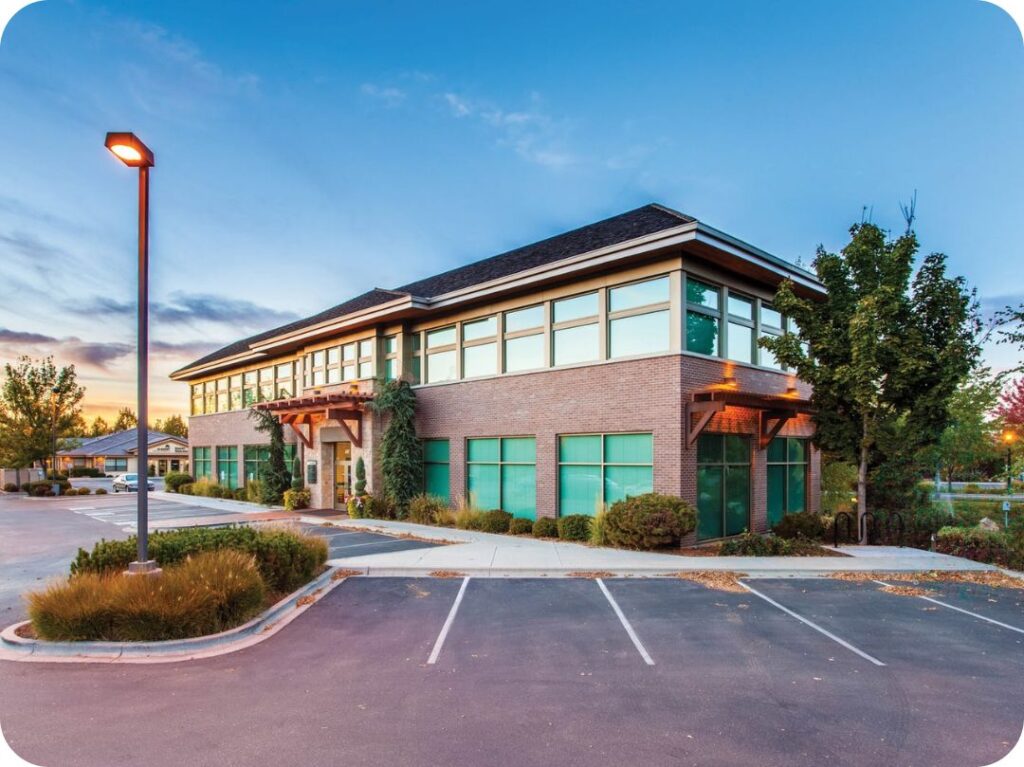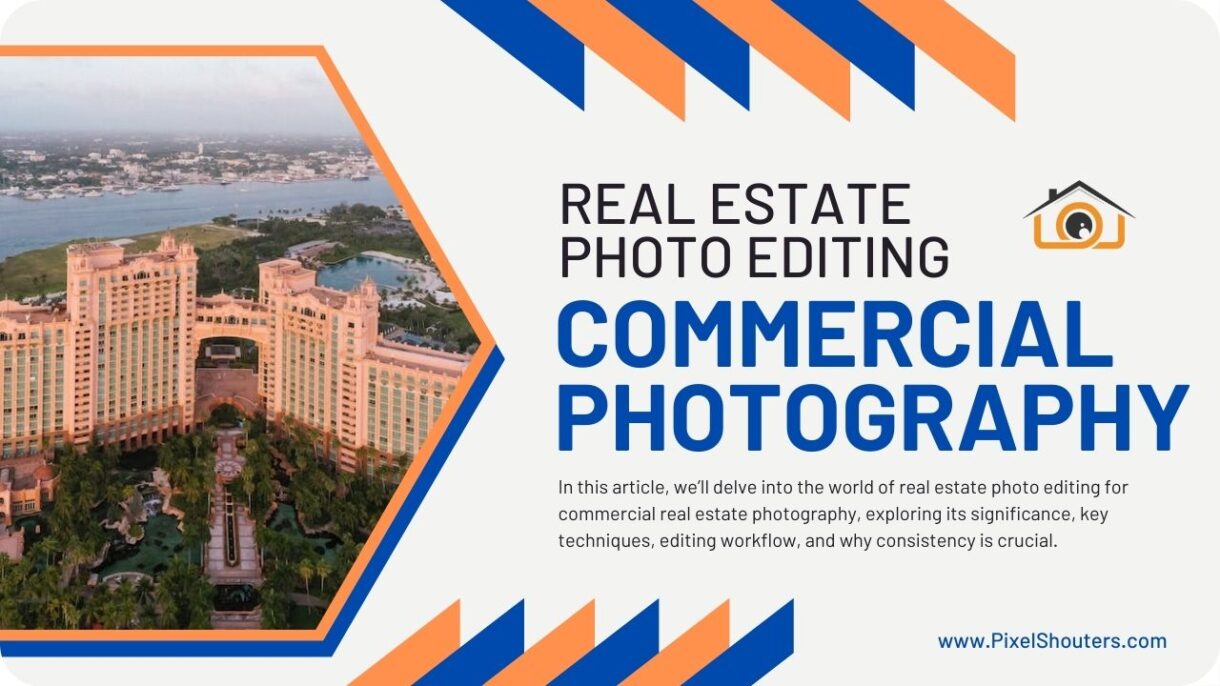Real Estate Photo Editing for Commercial Real Estate Photography
In the digital age, where first impressions can be made in a matter of seconds, high-quality visuals are paramount in the real estate industry. Stunning photographs can make a property stand out in a crowded market, attracting potential buyers and driving sales. However, capturing the perfect shot isn’t always straightforward, and this is where the art of photo editing comes into play. In this article, we’ll delve into the world of real estate photo editing for commercial real estate photography, exploring its significance, key techniques, editing workflow, and why consistency is crucial.
Table of Contents
What is Real Estate Photo Editing?
At its core, real estate photo editing is the process of retouching and enhancing property photographs to make them more appealing and accurate representations of the real estate being marketed. The goal is to make the property look its absolute best while remaining truthful to its actual condition.
The Significance of Real Estate Photography
Before we dive into the realm of photo editing, it’s important to understand why real estate photography holds such importance. Real estate is primarily a visual industry, and potential buyers rely heavily on photographs to make initial decisions about a property. Consider these statistics:
- According to the National Association of Realtors, 87% of home buyers used the internet to search for homes in 2020.
- The same report highlighted that 83% of buyers found photos to be the most useful feature of real estate websites.
- In a survey conducted by the Redfin Corporation, properties with high-quality photography receive 47% higher asking prices per square foot.
These numbers underscore the significance of high-quality real estate photography. A well-composed, well-lit, and visually appealing photograph can be the difference between a potential buyer clicking on a listing or moving on to the next one.

Challenges in Real Estate Photography
While the importance of photography in real estate is clear, achieving the desired results can be challenging. Real estate photographers often face several obstacles:
- Lighting Challenges: Natural light varies throughout the day and can create shadows and overexposure. Interior spaces may lack adequate lighting, making it difficult to capture the property’s true essence.
- Composition Issues: Proper composition is crucial, but tight spaces or cluttered rooms can limit a photographer’s ability to frame a shot effectively.
- Weather Dependence: Exterior shots are heavily dependent on the weather. A gloomy sky can make a property appear less inviting, while a bright, sunny day can be ideal.
- Lens Distortion: Wide-angle lenses are commonly used in real estate photography to capture more of a room, but they can introduce distortion that needs correction.
- Time Constraints: Real estate professionals often need images quickly, which can limit the time photographers have for post-processing.
These challenges can make it difficult to capture perfect photos straight out of the camera, which is where photo editing comes in.
Editing Tools and Software
Before diving into the editing techniques themselves, it’s essential to familiarize yourself with the tools and software used in real estate photo editing. Several options are available, catering to both beginners and professionals. Here are some of the widely favored tools:
- Adobe Lightroom: A widely used software for editing and organizing photos. Lightroom provides a wide range of editing tools, including exposure adjustments, color correction, and lens distortion correction.
- Adobe Photoshop: Known for its versatility, Photoshop allows for in-depth editing, retouching, and manipulation of images. It’s especially useful for complex tasks such as sky replacement and object removal.
- Capture One: A professional-grade editing tool preferred by many photographers for its powerful color grading and tethering capabilities.
- DxO PhotoLab: Known for its advanced automatic correction tools, DxO PhotoLab is an excellent choice for streamlining the editing process.
- Photomatix: Specifically designed for high dynamic range (HDR) photography, Photomatix helps create stunning, detailed images in challenging lighting conditions.
The choice of software often depends on your specific editing needs and level of expertise. Many photographers use a combination of these tools to achieve the desired results.
Key Editing Techniques for Real Estate Photos
Real estate photo editing involves a variety of techniques to transform ordinary photos into stunning visuals that captivate potential buyers. Here are some key editing techniques used in the industry:

1. Exposure and Brightness Adjustments
Proper exposure is fundamental in real estate photography. Exposure adjustments help balance the lighting in a photograph, ensuring that both interior and exterior details are visible. This technique can also enhance the mood of an image by controlling brightness and shadows.
2. Color Correction and White Balance
Correct color representation is vital in real estate photography. Adjusting color temperature and white balance ensures that the colors in the image look natural. Correcting color casts, such as overly warm or cool tones, can significantly improve the overall appeal of a property.
3. Perspective Correction and Lens Distortion Removal
Wide-angle lenses often result in perspective distortion, making straight lines appear curved. Real estate photo editors use tools to correct these distortions, ensuring that rooms and buildings appear straight and proportional. Additionally, lens distortion, such as barrel or pincushion distortion, is corrected to make images more visually pleasing.
4. Retouching and Enhancing Details
Real estate photo retouching involves improving the overall quality of a photo by removing imperfections, blemishes, or distractions. Editors can also enhance details like textures, fixtures, and architectural features to make the property more appealing.
5. Sky Replacement and Landscaping Enhancement
Replacing a dull or overcast sky with a vibrant one can dramatically improve the visual appeal of an exterior shot. Landscaping enhancement involves refining the appearance of lawns, gardens, and outdoor spaces to make them more inviting.
Editing Workflow
Now that we’ve explored some key editing techniques, let’s outline a typical editing workflow for real estate photos. This process ensures that each image is polished to perfection before it’s presented to potential buyers:
- Image Selection: Review all the photos taken during the shoot and select the best ones to edit. Delete any unusable or redundant shots to streamline the editing process.
- Import and Organization: Import the selected images into your chosen editing software. Create a systematic organization system to keep track of files.
- Exposure and Color Correction: Start by adjusting exposure and correcting color issues. Ensure that whites are truly white, and colors are accurate.
- Lens Distortion and Perspective Correction: Correct any lens distortions and perspective issues to ensure that lines are straight and the image looks natural.
- Retouching: Remove any imperfections or distractions from the image. This may include dust spots, reflections, or unwanted objects.
- Enhancement: Enhance the details of the property. This can involve sharpening, boosting colors, and improving textures.
- Sky Replacement (if necessary): If the original sky is unattractive or overcast, replace it with a more visually appealing one. Ensure that the replacement sky looks realistic.
- Quality Control: Carefully review the edited image to ensure that all edits are flawless and consistent with the property’s style.
- Export and Delivery: Export the edited image in the appropriate format and resolution for its intended use, whether for web listings, brochures, or other marketing materials.
Importance of Consistency
Consistency is a key element in real estate photo editing. When potential buyers browse listings, they often look at multiple properties, and a consistent editing style helps create a professional and cohesive impression. Here’s why consistency matters:
- Brand Identity: Consistent editing establishes a recognizable brand identity for real estate agencies or photographers. It helps build trust and credibility with clients and buyers.
- Comparison: Buyers often compare multiple properties. Consistency makes it easier for them to evaluate the differences between listings.
- Professionalism: A consistent editing style reflects professionalism and attention to detail, which can attract more clients and buyers.
To maintain consistency, real estate photographers and editors often create presets or templates that can be applied to multiple images. This ensures that all photos for a specific property or agency have a uniform look and feel.

Collaborating with Real Estate Photographers
If you’re a real estate photographer or agency looking to optimize your workflow and provide clients with stunning images, collaborating with a professional real estate photo editing company like PixelShouters can be a game-changer. Here’s how such collaboration can benefit you:
- Time Savings: Outsourcing the editing process frees up your time to focus on photography and client interactions.
- Expertise: Photo editing companies specialize in real estate image enhancement and have a deep understanding of the industry’s requirements.
- Consistency: Editing companies can ensure a consistent editing style across all your listings.
- Scalability: As your business grows, outsourcing editing can help you handle larger volumes of work efficiently.
- Quality Control: Professional editing companies have stringent quality control processes to deliver flawless images.
Quality Control and Customer Satisfaction
Maintaining quality and ensuring customer satisfaction are paramount in the real estate photo editing industry. Here are some practices that PixelShouters, and other reputable editing companies, employ:
- Quality Assurance Teams: These teams review edited images meticulously to identify and rectify any errors or inconsistencies.
- Client Feedback: Soliciting feedback from clients is essential. This helps identify specific preferences and ensures that the final product aligns with the client’s vision.
- Revisions: Editing companies often offer revision services to address any client concerns or adjustments.
- Efficient Communication: Open and efficient communication between photographers, editors, and clients is key to delivering satisfactory results.
- Meeting Deadlines: Adhering to agreed-upon delivery times is crucial to maintaining a professional relationship with clients.
In the highly competitive real estate industry, high-quality images can be a game-changer. Ensuring that your edited photos meet the highest standards is essential for both client satisfaction and the success of your business.
Conclusion
Real estate photo editing plays a pivotal role in presenting properties in the best possible light. In a world where online listings dominate the market, captivating visuals are essential for attracting buyers and generating interest. Understanding the significance of real estate photography, the challenges it poses, and the editing techniques involved can help you excel in this dynamic industry.
Whether you’re a real estate photographer looking to streamline your workflow or a property agency aiming to enhance your listings, PixelShouters and similar specialized editing companies can be valuable partners. Their expertise, consistency, and commitment to quality can elevate your real estate marketing efforts and help you stand out in a competitive market.
Investing in high-quality real estate photo editing is an investment in the success of your property listings. In an industry where first impressions matter, the impact of professional photo editing cannot be overstated. Make it a part of your strategy, and watch your real estate business flourish.
Contact Information and Call to Action
Ready to take your real estate photography and marketing to the next level? Contact PixelShouters today to discuss your editing needs and explore how we can help you create stunning visuals that make your properties shine. Visit our website at www.pixelshouters.com or email us at [email protected] to get started on a path to better real estate photography.
